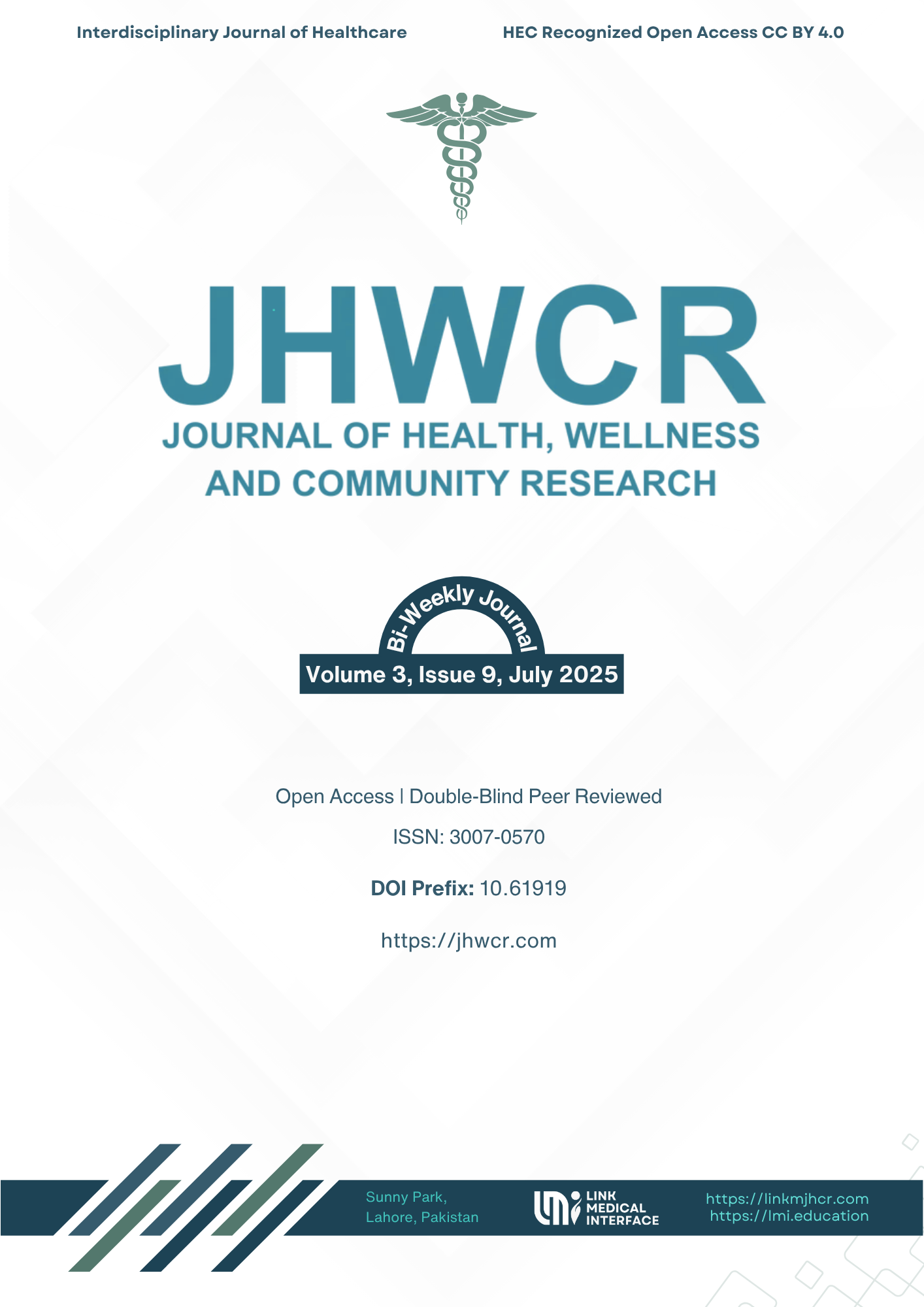Comparative Effects of Muscle Energy Technique V/S Core Stabilization Exercises with Stretching for SIJ Dysfunction with Innominate Rotation in Females
DOI:
https://doi.org/10.61919/1bkp1k28Keywords:
sacroiliac joint dysfunction, muscle energy technique, core stabilization exercises, low back pain, innominate rotation, physical therapyAbstract
Background: Sacroiliac joint (SIJ) dysfunction, characterized by altered biomechanics and innominate rotation, is a prevalent contributor to chronic low back pain, particularly among females aged 20–45 years. Muscle energy technique (MET) and core stabilization exercises (CSE) are two conservative interventions frequently utilized in clinical practice, but comparative evidence regarding their relative effectiveness remains limited. Objective: To compare the effects of MET combined with stretching versus CSE combined with stretching on pain intensity, disability, and range of motion (ROM) in females with SIJ dysfunction and innominate rotation. Methods: A quasi-experimental study was conducted at Government College University Faisalabad, Allied Hospital, and Chiniot Hospital from March 5 to May 5, 2025. Thirty female participants aged 20–45 years with chronic low back pain, confirmed SIJ dysfunction (≥3 positive pain provocation tests), VAS ≥3, and MODI >20% were randomly allocated to Group A (MET + stretching) or Group B (CSE + stretching) for two sessions weekly over eight weeks. Outcomes included VAS, MODI, and ROM measurements, assessed at baseline and post-intervention. Statistical analysis used paired and independent t-tests at a 0.05 significance level. Results: Both interventions significantly improved pain, disability, and ROM within groups (p<0.001). Between groups, CSE demonstrated greater pain reduction at post-intervention (VAS mean 0.67 vs 1.27, p=0.029), while MET yielded superior, though non-significant, improvements in disability and ROM. Conclusion: MET and CSE are both effective for managing SIJ dysfunction in females, with CSE providing greater immediate pain relief and MET offering broader functional gains.
Downloads
Published
Issue
Section
License
Copyright (c) 2025 Muhammad Abbas, Eman Zulfiqar Ali, Hafsa Maqsood, Malaika Tariq, Hafiz Muhammad Ahmad Raza, Amna Aslam, Fatima Sajjad (Author)

This work is licensed under a Creative Commons Attribution 4.0 International License.


